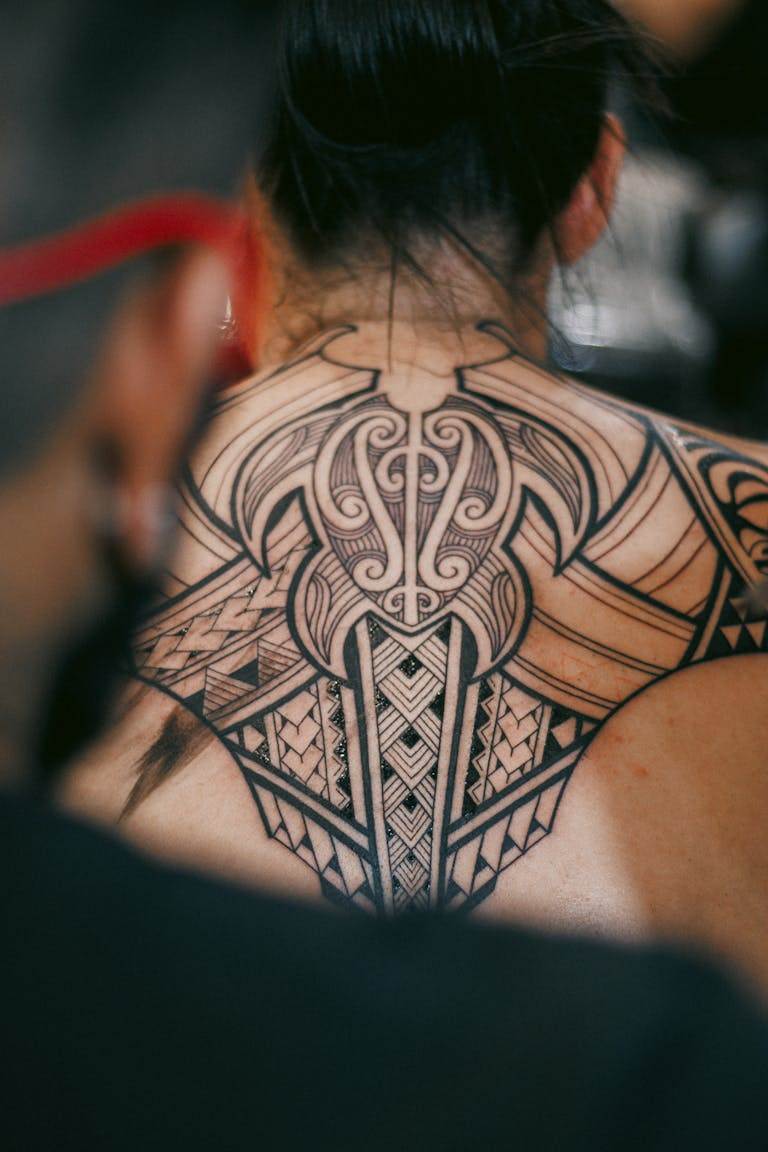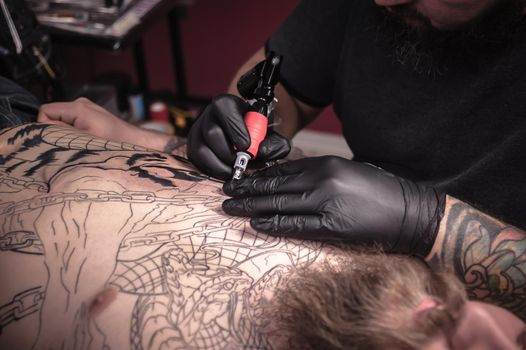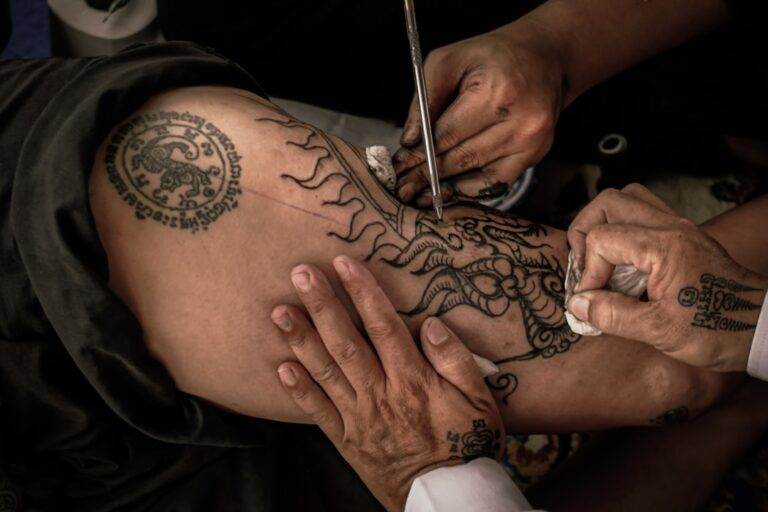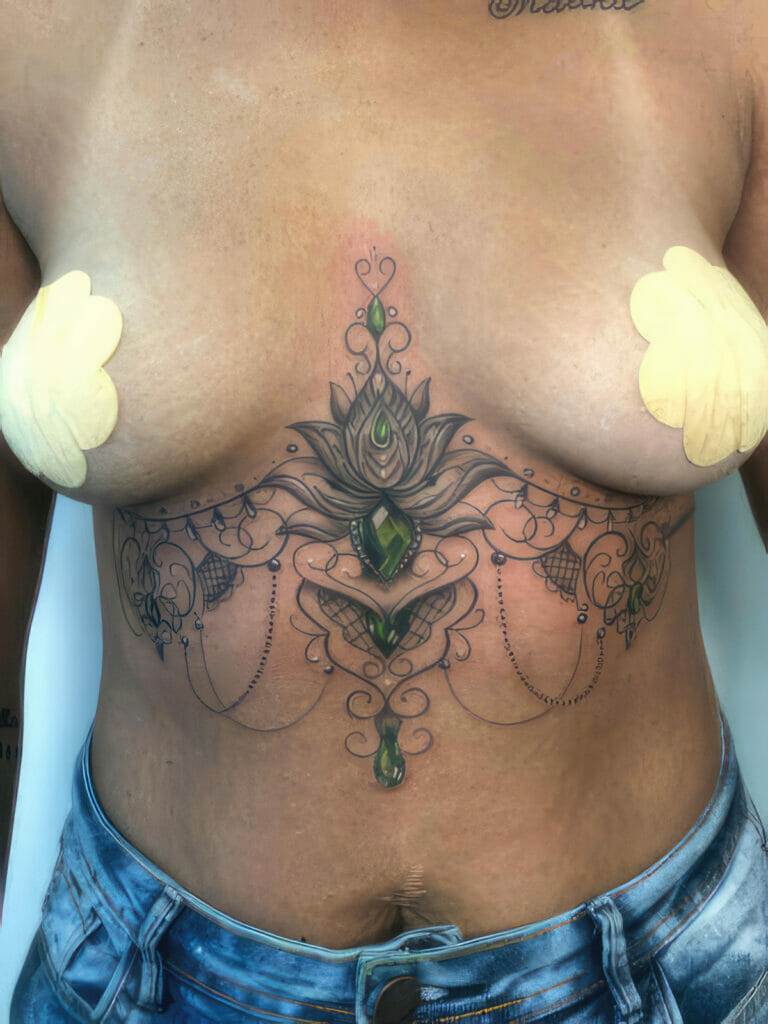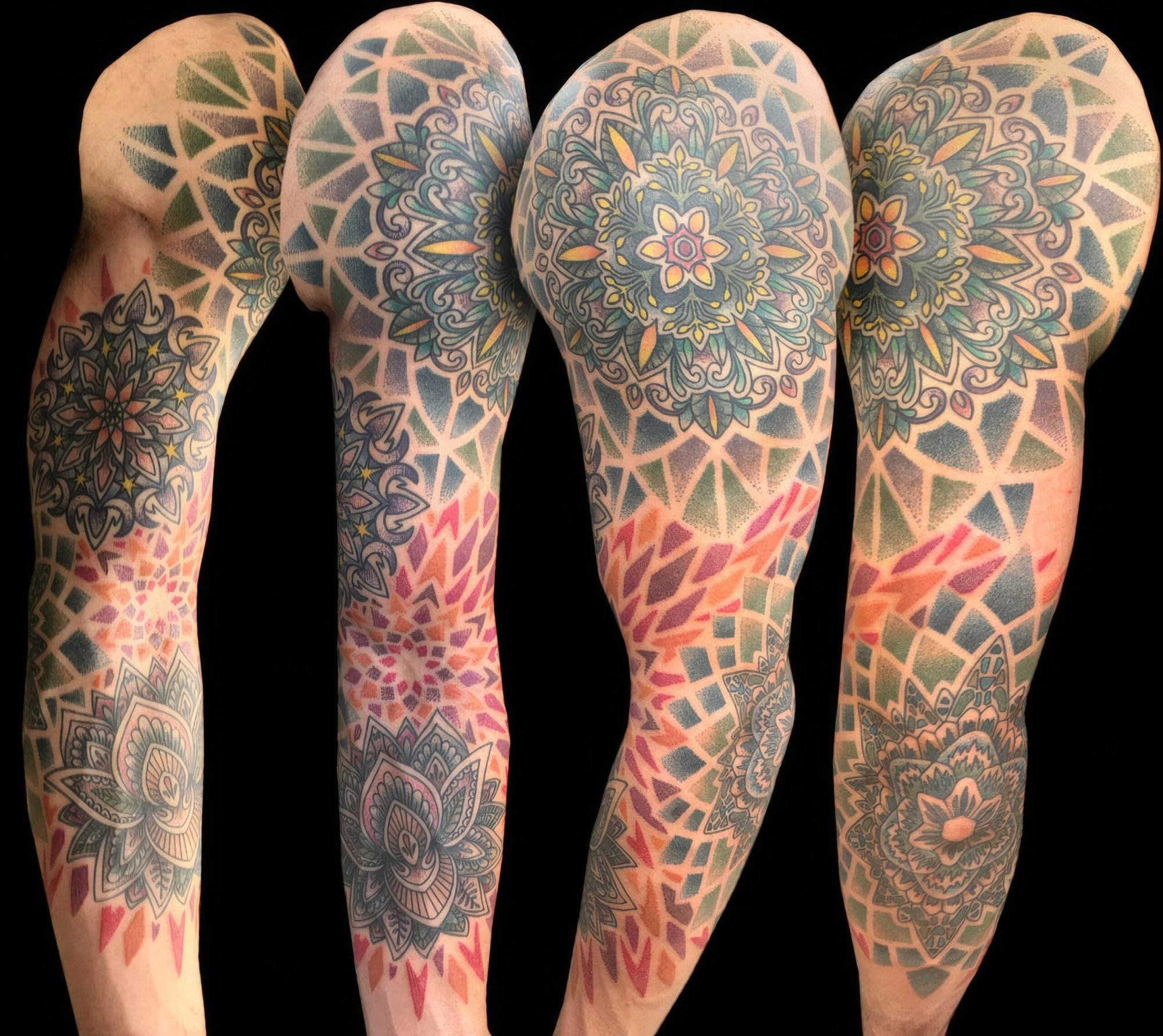
Selecting the perfect design for a sleeve tattoo is a deeply personal journey that reflects your individuality and life experiences. A sleeve tattoo, which covers a significant portion of the arm, offers a canvas for intricate artwork, storytelling, and symbolism. When contemplating your design, consider what themes resonate with you.
Popular motifs include nature, mythology, and personal milestones. For instance, floral designs can symbolize growth and beauty, while geometric patterns may represent balance and harmony. It’s essential to think about how these elements will not only look together but also how they will represent your identity over time.
Moreover, the design should be cohesive and flow well with the contours of your arm. This means considering how different elements will interact with each other and how they will be perceived from various angles. Many people opt for a central theme that ties the entire sleeve together, such as a specific color palette or a narrative arc.
Collaborating with a skilled tattoo artist can help refine your ideas into a stunning visual representation that captures your essence. Remember, this is a permanent decision, so take your time to explore various designs and gather inspiration from different sources, including art, literature, and personal experiences.
Key Takeaways
- Consider the style, theme, and color scheme when choosing the right design for your sleeve tattoo
- Research and find a reputable and experienced tattoo artist who specializes in sleeve tattoos
- Plan the placement and size of your sleeve tattoo to ensure it complements your body and lifestyle
- Set a budget for your sleeve tattoo and be prepared for additional costs such as touch-ups and aftercare products
- Create a timeline for your sleeve tattoo to allow for proper healing and to accommodate multiple sessions if needed
- Prepare your skin by keeping it moisturized and avoiding sun exposure before getting your sleeve tattoo
- Endure the pain of getting a sleeve tattoo by staying relaxed, taking breaks if needed, and following your artist’s aftercare instructions
- Care for your sleeve tattoo after completion by keeping it clean, moisturized, and protected from the sun to preserve its quality and vibrancy
Finding the Right Tattoo Artist for Your Sleeve Tattoo
Once you have a design in mind, the next crucial step is finding the right tattoo artist to bring your vision to life. Not all tattoo artists specialize in sleeve tattoos or the specific style you may want, so it’s important to do thorough research. Start by looking at portfolios of local artists to assess their skill level and artistic style.
Pay attention to their previous sleeve work; this will give you insight into their ability to create cohesive designs that flow well on the arm. Additionally, consider the artist’s reputation within the community. Reading reviews and testimonials can provide valuable information about their professionalism, hygiene practices, and overall client satisfaction.
It’s also beneficial to schedule consultations with potential artists to discuss your ideas and gauge their enthusiasm for your project. A good artist will not only listen to your vision but also offer suggestions based on their expertise. This collaborative approach can lead to a more refined design that you may not have considered initially.
Planning the Placement and Size of Your Sleeve Tattoo

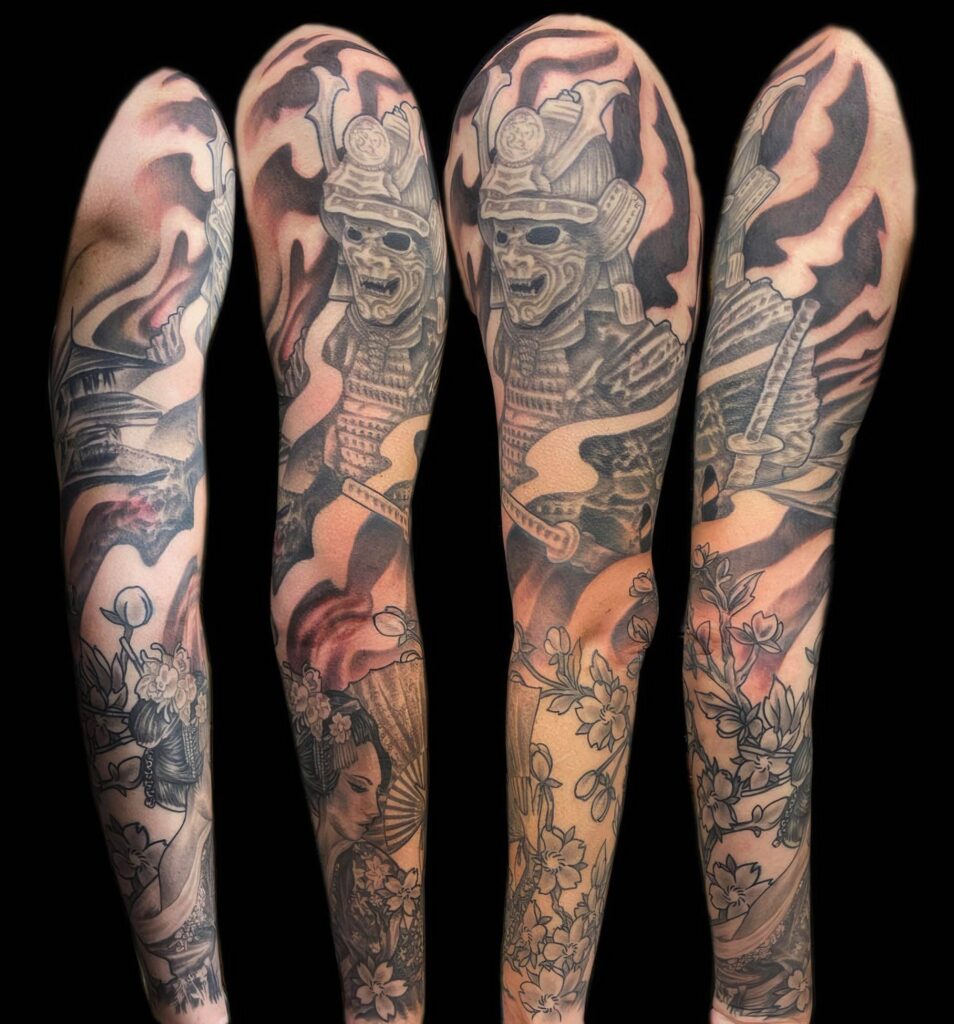

The placement and size of your sleeve tattoo are critical factors that can significantly impact its overall appearance and meaning. A full sleeve typically extends from the shoulder to the wrist, while a half sleeve covers either the upper or lower arm. When deciding on placement, think about how visible you want your tattoo to be in everyday life.
Some individuals prefer to keep their tattoos hidden for professional reasons, while others embrace the opportunity to showcase their art. Size is another important consideration; larger tattoos allow for more intricate details and a broader range of elements. However, larger pieces may also require more time and multiple sessions to complete.
It’s essential to communicate your preferences clearly with your tattoo artist, as they can provide guidance on how size and placement will affect the overall design. They may suggest adjustments to ensure that the tattoo flows well with your body’s natural lines and movements, enhancing its aesthetic appeal.
Budgeting for Your Sleeve Tattoo
Budgeting for a sleeve tattoo is an essential step that requires careful consideration of various factors. The cost of a sleeve tattoo can vary widely based on the artist’s experience, the complexity of the design, and the time required for completion. Generally, more intricate designs that require extensive detail will be more expensive than simpler ones.
It’s advisable to have an open discussion with your chosen artist about pricing during your initial consultation to avoid any surprises later on. In addition to the tattooing cost itself, consider other expenses such as aftercare products and potential touch-up sessions in the future. Aftercare is crucial for ensuring that your tattoo heals properly and maintains its vibrancy over time.
Setting aside a budget for these additional costs will help you manage your finances effectively. Remember that investing in quality work is often worth it; a well-executed sleeve tattoo can be a lifelong source of pride and expression.
Creating a Timeline for Your Sleeve Tattoo
Creating a timeline for your sleeve tattoo is an important aspect of the planning process that can help manage expectations and ensure a smooth experience. The timeline will depend on several factors, including the complexity of the design, the artist’s availability, and how many sessions are required to complete the piece. For instance, a full sleeve may take several sessions spread over weeks or even months, while a half sleeve might be completed in fewer visits.
When discussing timelines with your tattoo artist, be sure to account for healing time between sessions. It’s essential to allow your skin to heal properly before adding more ink; this not only ensures better results but also minimizes discomfort during subsequent sessions. Establishing a clear timeline will help you stay organized and mentally prepared for each stage of the process, making it easier to enjoy the journey of creating your sleeve tattoo.
Preparing Your Skin for Your Sleeve Tattoo
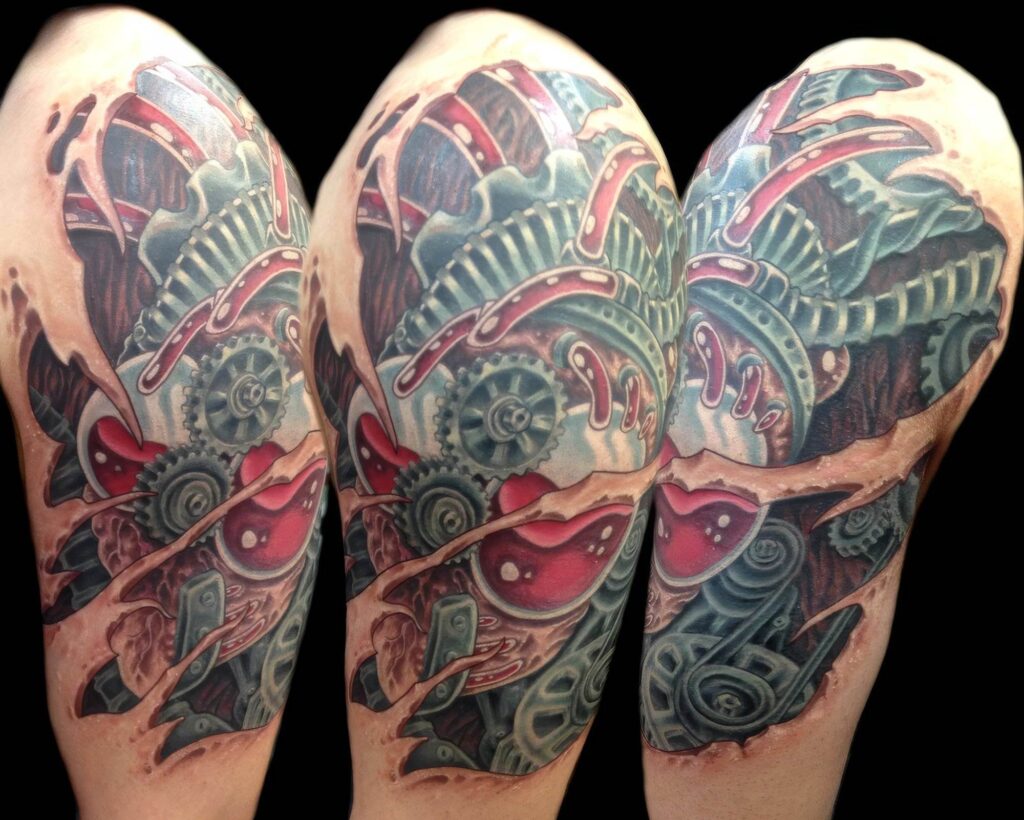
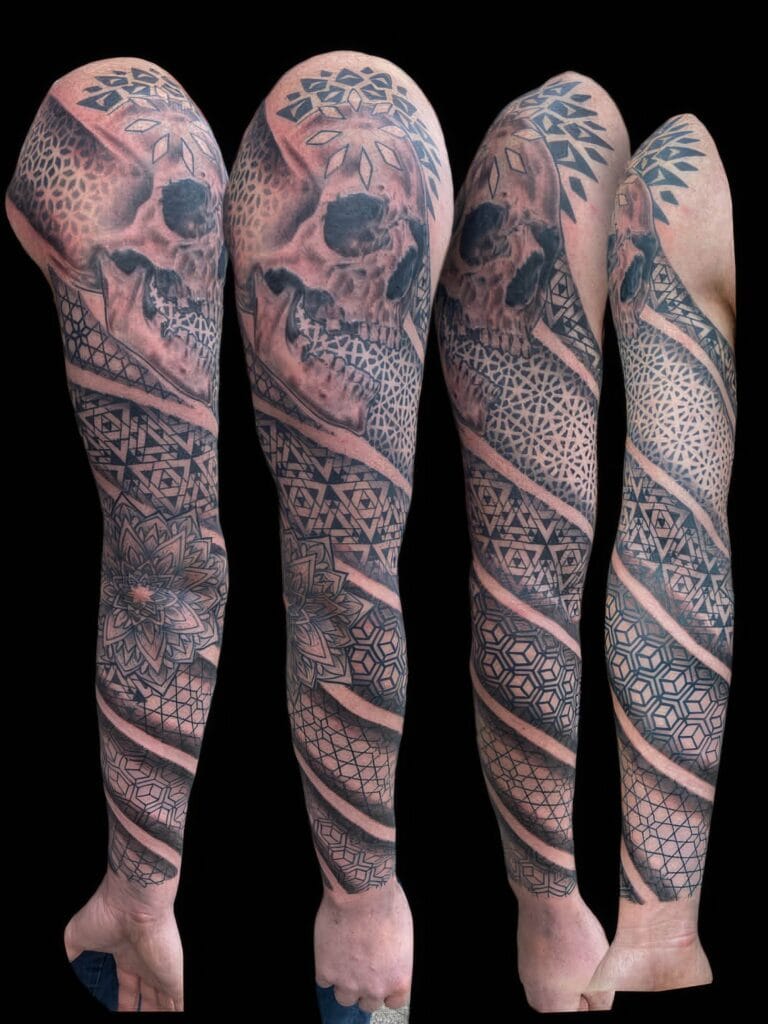
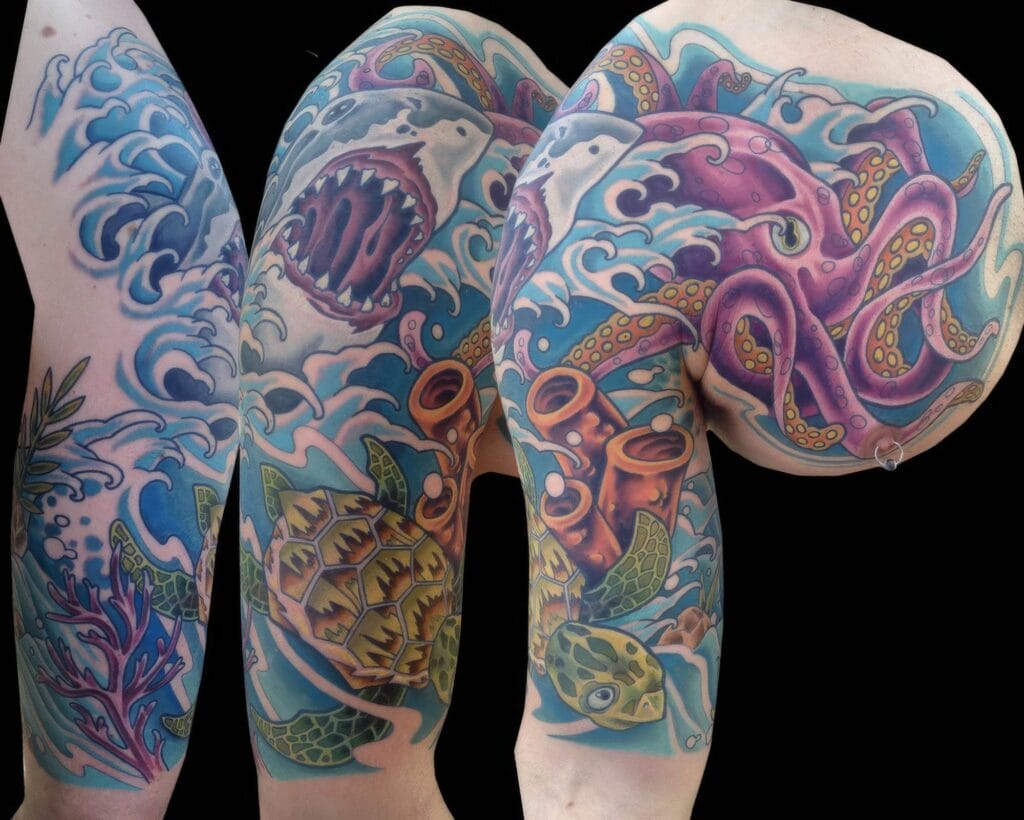
Preparing your skin for a sleeve tattoo is crucial for achieving optimal results and ensuring a comfortable experience during the tattooing process. In the days leading up to your appointment, focus on keeping your skin well-hydrated by drinking plenty of water and applying moisturizer regularly. Healthy skin is more resilient and can better withstand the tattooing process, leading to improved healing outcomes.
On the day of your appointment, it’s advisable to avoid alcohol and excessive caffeine, as these substances can thin your blood and increase sensitivity during the session. Additionally, wearing loose-fitting clothing can help prevent irritation around the tattooed area. If you have any specific skin conditions or concerns, be sure to discuss them with your artist beforehand so they can take appropriate precautions.
Enduring the Pain: Tips for Getting Through Your Sleeve Tattoo Session
Getting a sleeve tattoo can be an intense experience due to the extended duration of the session and the sensitivity of certain areas on the arm. However, there are several strategies you can employ to help manage discomfort during the process. First and foremost, communicate openly with your tattoo artist about any pain you’re experiencing; they can adjust their technique or take breaks as needed.
Practicing relaxation techniques can also be beneficial in coping with pain. Deep breathing exercises or visualization techniques can help calm your mind and distract you from discomfort. Some individuals find it helpful to bring along music or podcasts to listen to during their session; this can create a more enjoyable atmosphere and help pass the time more quickly.
Remember that while some discomfort is inevitable, focusing on the end result—a beautiful piece of art—can make the experience more bearable.
Caring for Your Sleeve Tattoo After Completion
Proper aftercare is essential for ensuring that your sleeve tattoo heals well and retains its vibrancy over time. Immediately after getting your tattoo, follow your artist’s specific aftercare instructions closely; these may include keeping the area clean and moisturized while avoiding direct sunlight and soaking in water for an extended period. Using fragrance-free products is often recommended to prevent irritation.
During the healing process, it’s normal for your tattoo to go through various stages, including peeling and itching. Resist the urge to scratch or pick at scabs; doing so can damage the ink and lead to uneven healing. Instead, keep applying moisturizer as directed by your artist to soothe any discomfort.
Once healed, continue caring for your skin by using sunscreen when exposed to sunlight; this will help preserve the colors and details of your tattoo for years to come. In conclusion, embarking on the journey of getting a sleeve tattoo involves careful consideration at every stage—from choosing a design that resonates with you to ensuring proper aftercare post-tattooing. By taking these steps seriously, you can create a meaningful piece of art that not only enhances your appearance but also serves as a lasting expression of who you are.
FAQs
What is a sleeve tattoo?
A sleeve tattoo is a large tattoo or a collection of smaller tattoos that covers a significant portion of a person’s arm, from the shoulder to the wrist. It can be a single cohesive design or a collection of individual tattoos that are connected to form a sleeve.
How long does it take to plan a sleeve tattoo?
The planning process for a sleeve tattoo can vary depending on the complexity of the design and the availability of the tattoo artist. It can take anywhere from a few weeks to several months to fully plan a sleeve tattoo.
What are the steps involved in planning a sleeve tattoo?
The steps involved in planning a sleeve tattoo typically include:
1. Researching tattoo styles and designs
2. Finding a reputable and skilled tattoo artist
3. Collaborating with the artist to develop the concept and design
4. Scheduling multiple tattoo sessions to complete the sleeve
How much does a sleeve tattoo cost?
The cost of a sleeve tattoo can vary widely depending on factors such as the size, complexity, and location of the tattoo studio. Sleeve tattoos can range from a few hundred dollars to several thousand dollars.
How many sessions are typically needed to complete a sleeve tattoo?
The number of sessions needed to complete a sleeve tattoo can vary depending on the size and complexity of the design, as well as the pain tolerance of the individual. It is not uncommon for a sleeve tattoo to require multiple sessions, often spaced several weeks apart, to allow for healing and additional work on the design.

